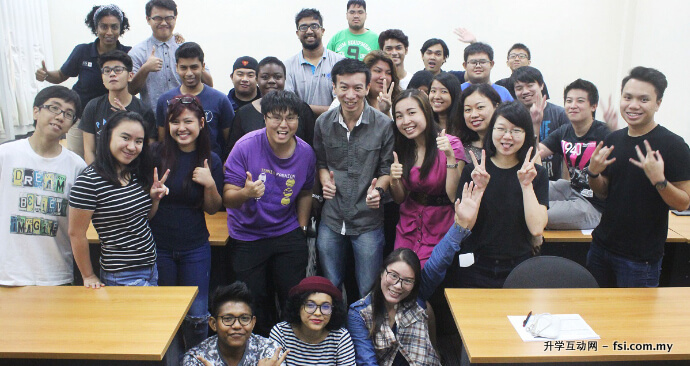
The winning project ‘ElecTHOR Cannon’ demonstrating the concept of electromagnetism.
Miri – 27 November 2015 – 291 second-semester Foundation in Engineering and Science students of Curtin University, Sarawak Malaysia (Curtin Sarawak) showcased their physics projects in a project exhibition at the university recently.
A total of 34 projects were displayed, demonstrating their grasp of the subject and the effective application of concepts learnt throughout their Foundation year.
The projects involved making prototypes based on topics covered in their Foundation Engineering Physics units, including kinematics, dynamics, work, energy, momentum, impulse, rotational motion, equilibrium, elasticity, heat, fluids, electrostatics, direct current, RC circuit, photoelectric effect, magnetism, electromagnetism, optics and nature of light.
The students worked in groups of 6 to 10 members to design and build their prototypes within 13 weeks.
The exhibition, held at the foyer of the university’s Harry Perkins Lecture Theatre, was facilitated by Physics 062 coordinator Pang Po Ken and teaching staff Hii Kiew Ling, Lai Zhenyue and Natallee Faith Kwan.
According to Pang, the project exhibition is one of the assessment components of the unit. The students were assessed on their understanding and application of the physics concepts, as well as the creativity, originality, attractiveness and functionality of their prototypes.
“It helps them develop critical skills that will help in their undergraduate engineering and science studies. They also learn to be more organised and creative in their presentations,” he said.
Pang added that project presentations are held every semester but this was the first time that projects were showcased publicly at an exhibition.
Lai said the lecturers were impressed by the students’ creativity and efforts in making the exhibition a success. “It is evident that they put a lot of effort into their projects and the quality of their displays was quite astounding,” she remarked.
Hii, too, was impressed with their dedication and determination to complete their projects on time. “Though they faced all sorts of obstacles during the process, their perseverance kept them going. I could see their initiative in finding solutions to problems and I think they learned a great deal from the experience,” she said.
She added that the main purpose of having a project-based learning assessment was to motivate students to search for ideas and solutions.
Student Chua Wei Jing said the projects were a great opportunity for the students to apply the theories they had learned in the classroom in practical and innovative ways. “We discovered that theories can only provide the fundamental concepts. When put into practice, there were a lot of unforeseen factors that needed to be considered, making our projects very challenging,” commented Chua.
Fellow student Han Kit Siew, meanwhile, remarked that strong teamwork was prevalent among the students and her team’s project would not have been accomplished without the team spirit they had.
Awards were given to the teams whose projects showed the best relevance to the project theme and demonstrated the most attractive and creative prototypes.

Project ‘Piano Optics’ team with lecturers Hii Kiew Ling and Pang Po Ken (centre).
The winning project was ‘ElecTHOR Cannon’ which demonstrated the electromagnetism concept. Coming in second was ‘Piano Optics’ demonstrating the wave and optics concept, while third-placed project ‘Unbreakable’ demonstrated the concept of equilibrium.
“The project was very challenging, to the extent where we considered giving up after several failures. However, our determination kept us going and after several test runs, we finally succeeded. The feeling of success was indescribable and it was great seeing our hard work finally paying off,” said Ho Zhi Hong, leader of the winning team.

Third-placed ‘Unbreakable’ project team with their equilibrium block.
科廷大学(澳洲大学马来西亚分校) Curtin University Sarawak Malaysia
http://www.fsi.com.my/curtin-sarawak/











